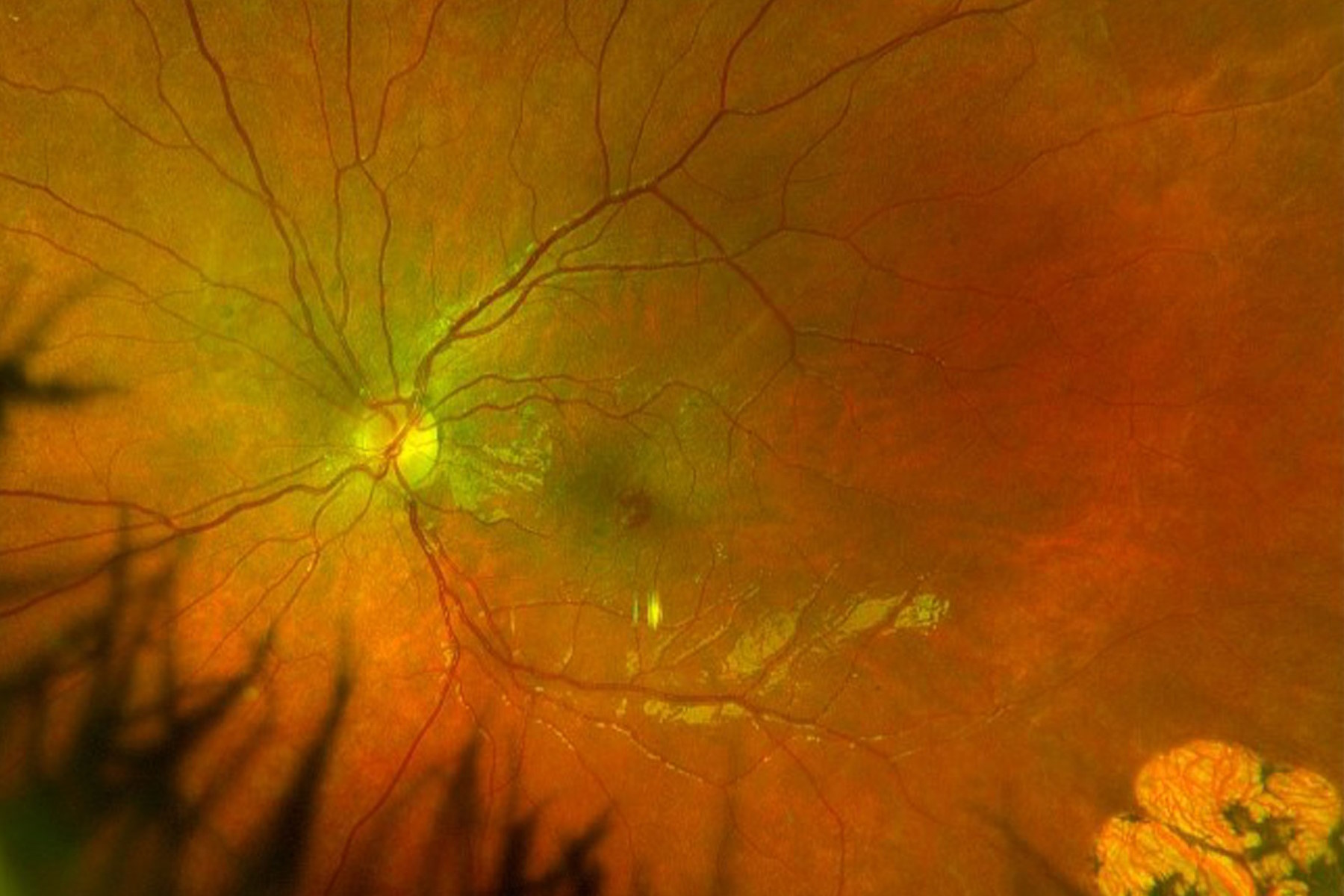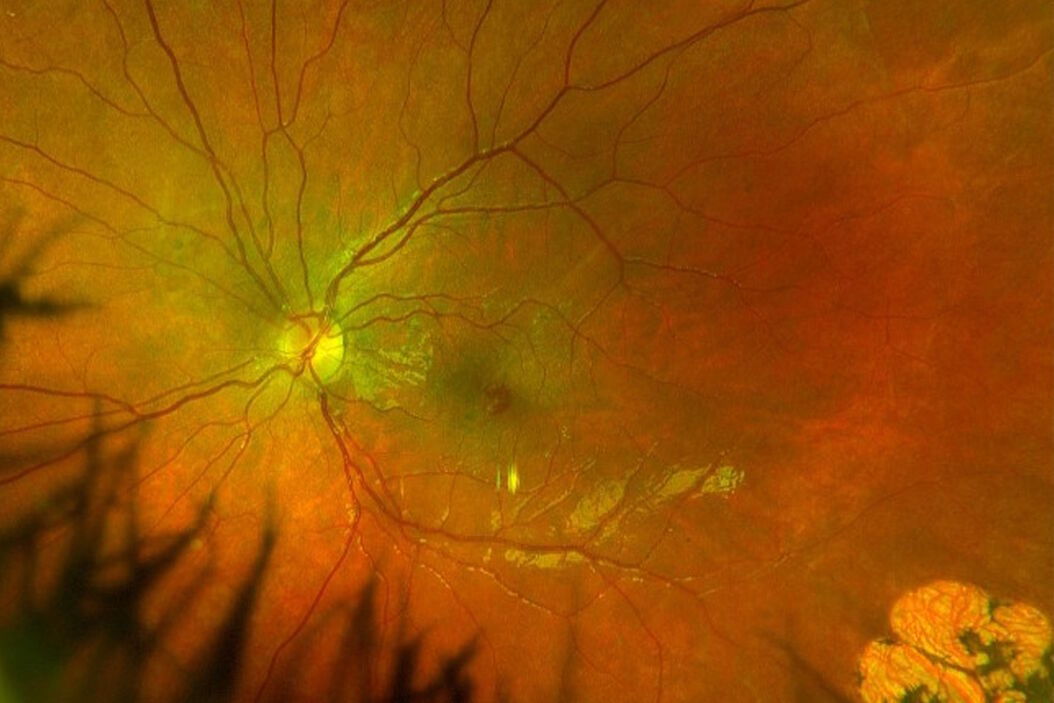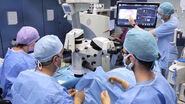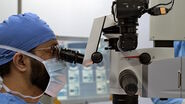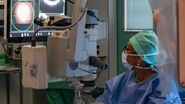About the case study
Key Learnings
- Learn about the surgical management of a 9-year-old boy with epiretinal membrane in both eyes
- Discover the surgical approach to close the lamellar macular hole and the course of the operation
- Understand the role of intraoperative optical coherence tomography
The inverted internal limiting membrane (ILM) flap technique may increase anatomic and visual outcomes for full thickness or lamellar macular holes. This case demonstrates how intraoperative optical coherence tomography (OCT) provides valuable real-time information and insights during pediatric macular hole repair to avoid dislodging the ILM flap.
Case Description
A 9-year-old boy presented with complaints of blurred and distorted vision in the left eye. He had congenital cystic encephalomalacia that resulted in seizures and multiple falls in his early childhood. There was no recent trauma or family history of seizure disorder, and he was neurologically intact.
On examination, the anterior segment was normal but both eyes had an epiretinal membrane, greater in the left eye, with lamellar macular hole.
There was no hearing loss or family history of neurofibromatosis type 2. The boy was having difficulty playing sports due to reduced depth perception, especially with baseball.
Pre-operative assessment
Visual acuities were subnormal in both eyes, and particularly in the left eye at 20/60. There was an area of chorioretinal scarring temporally in the left eye. This may represent resolution of previous commotio retinae.
Surgical approach
The surgical plan was to remove the epiretinal membrane, elevate the epiretinal proliferation and use an ILM flap to close the lamellar macular hole.
Continue Reading
Expand your knowledge with Dr. Sisk’s treatment of the lamellar macular hole utilizing intraoperative optical coherence tomography on the Proveo 8 surgical microscope.
The statements of the healthcare professional included in this case study reflect only their opinions and personal experiences and not those of Leica Microsystems. They also do not necessarily reflect the opinions of any institution with which they are affiliated. Please note that off-label uses of products may be discussed. Please check with regulatory affairs for cleared indications for use in your region.
